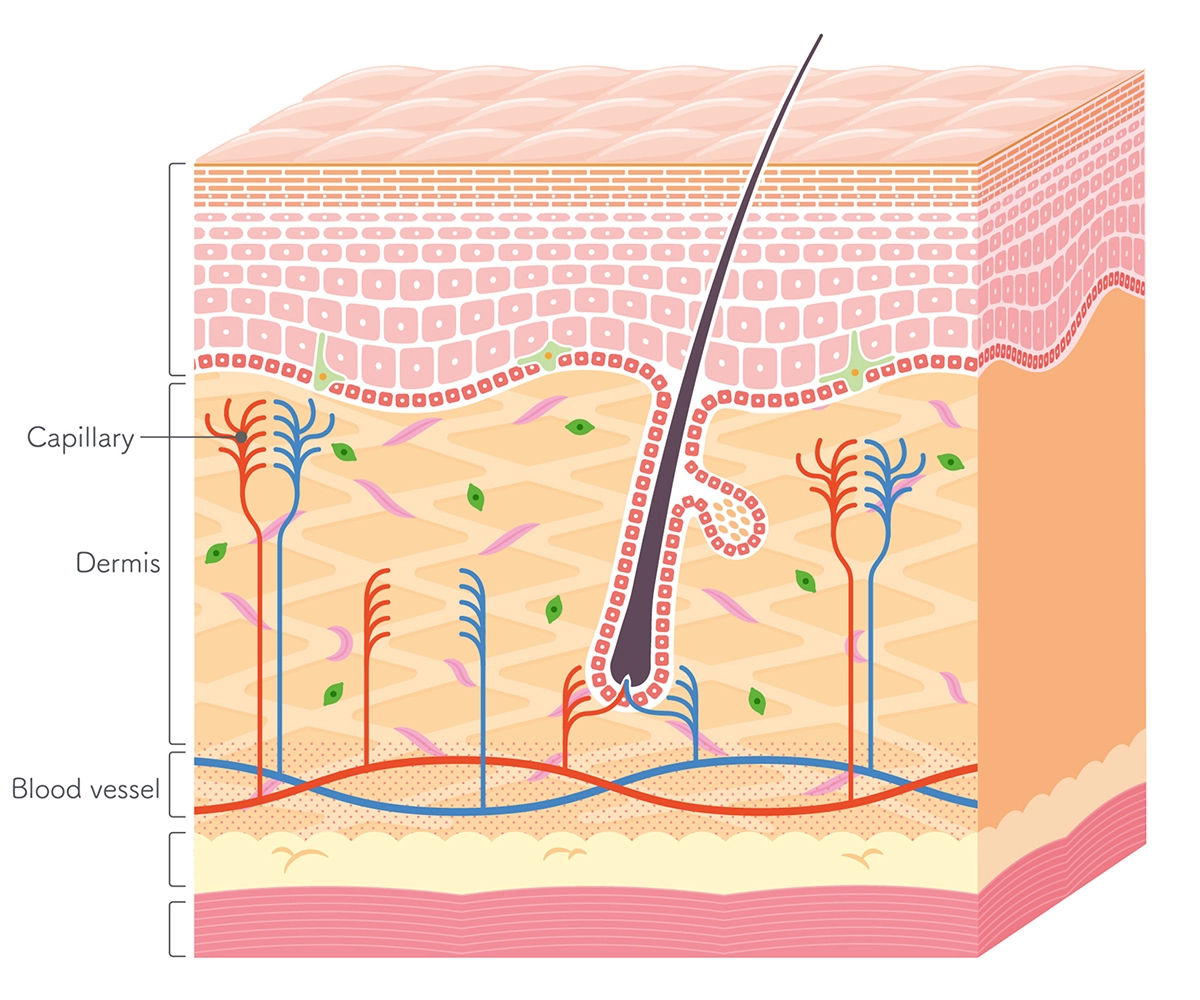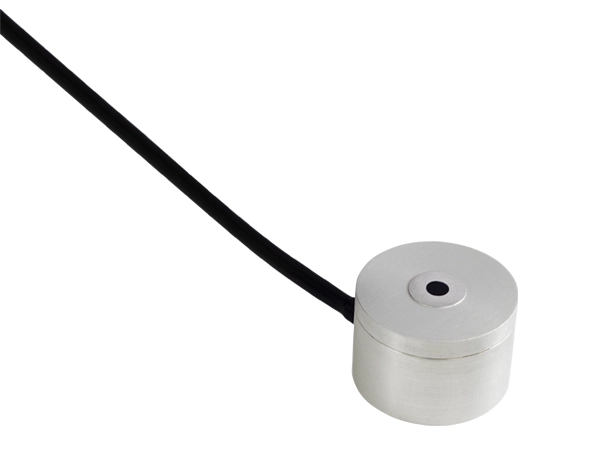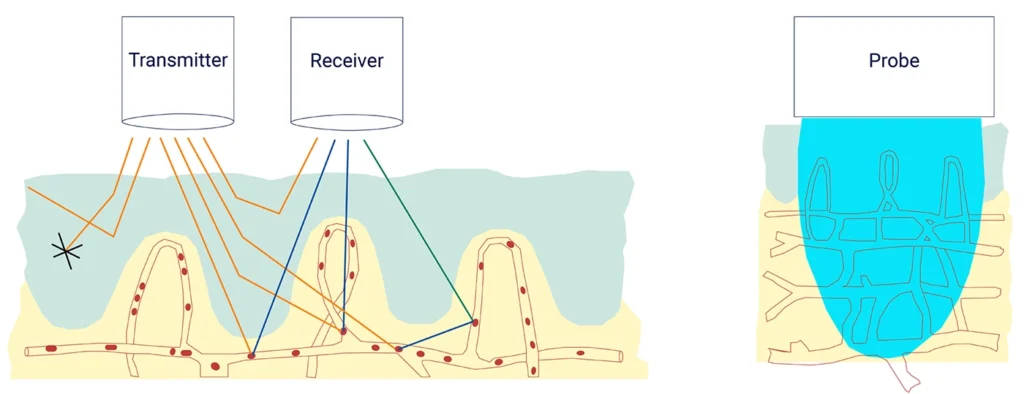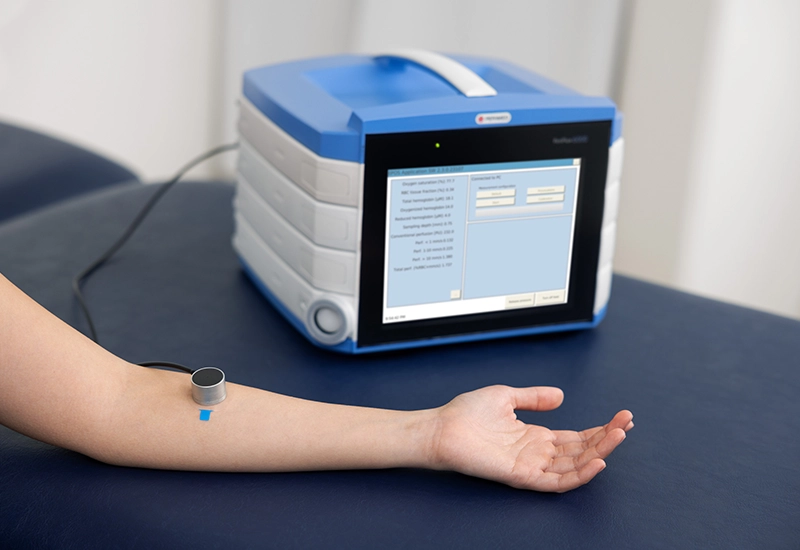PeriFlux 6000 Enhanced Perfusion and Oxygen Saturation
Measuring microcirculation with optical technology
PeriFlux 6000 EPOS is designed for use in clinical studies, addressing the need for robust microcirculation measurements. It supports the development of new insights into disease onset and progression, providing researchers with the data to better understand conditions where microcirculation plays a pivotal role such as endothelial dysfunction, diabetes, hypertension, and peripheral artery disease (PAD).

How it works
To facilitate the delivery of oxygen and nutrients, blood flow is relatively slow in the capillaries compared with other microcirculation vessels — arterioles and venules. PeriFlux 6000 EPOS leverages this physiology, making it possible to differentiate between slow nutritive flows and faster transportation flows.
Our unique model-based analysis[1][2][3] delivers blood flow insights and red-blood-cell (RBC) oxygen saturation by combining laser Doppler flowmetry (LDF) and diffuse reflectance spectroscopy (DRS) to significantly enhance perfusion measurements, accounting for factors such as tissue scattering.

Specialized probe
To provide both LDF- and DRS-based measurements, the specialized EPOS 650 probe is equipped with both near-infrared laser and visible white light, delivering reliable readings to the instrument via a fiber-optic cable.
More information: Laser Doppler probes
Measurements delivered
- RBC oxygen saturation (%).
- RBC tissue fraction: gram RBC / 100 gram tissue (%).
- Speed-resolved perfusion: gram RBC / 100 gram tissue × mm/seconds (% RBC x mm/second).
- Three different speed regions: < 1 mm/second, 1 to 10 mm/second, and > 10 mm/second.
- Measurement depth (mm).
Clinical application
Because it delivers vital oxygen and nutrients as well as collecting waste, microcirculation plays an important role in tissue health. Conditions like diabetes, hypertension, and peripheral artery disease (PAD), are associated with dysfunction in the microcirculation [4] or endothelial layer [5][6]. Impaired endothelial function is a risk factor for cardiovascular diseases [7], and while cardiovascular diseases and diabetes lead to changes in the microcirculation [8], changes in the microcirculation could also be an early indication of these conditions. PeriFlux 6000 EPOS is designed to help researchers identify these kinds of early disease markers and how they progress.
The technology
Laser Doppler flowmetry (LDF)
LDF leverages the Doppler effect to assess the speed and concentration of red blood cells in a person’s microcirculatory system. Using a laser to illuminate the tissue under the skin, the frequency spectrum of the backscattered light reveals the level of perfusion in the person’s microcirculation.
Diffuse reflectance spectroscopy (DRS)
When visible to near-infrared light is shone on the skin, oxygenated and deoxygenated hemoglobin in the tissue exhibit distinct absorption characteristics that can be utilized to estimate tissue oxygen saturation levels



A research case
Funded primarily by the Swedish Heart-Lung Foundation, SCAPIS[9] is a unique study on the role of the heart, blood vessels, and lungs to predict the risk of, for example, heart attack or stroke as well as develop treatments before illness occurs.
In the study, 30,000 randomly selected Swedes aged 50–64 have undergone comprehensive health examinations — samples, tests, x-rays of organs, and advanced imaging inside the vessels, including forearm perfusion and oxygen saturation measurements using PeriFlux 6000 EPOS. The study has revealed a strong association between skin microcirculation function and cardiovascular risk[10].
Contact US
Get in touch
For more information about PeriFlux 6000 EPOS, fill out the form and we will be in touch with you shortly.
References
- Fredriksson, I., Burdakov, O., Larsson, M., & Strömberg, T. (2013). Inverse Monte Carlo in a multilayered tissue model: merging diffuse reflectance spectroscopy and laser Doppler flowmetry. Journal of biomedical optics, 18(12), 127004. https://doi.org/10.1117/1.JBO.18.12.127004
- Jonasson, H., Fredriksson, I., Pettersson, A., Larsson, M., & Strömberg, T. (2015). Oxygen saturation, red blood cell tissue fraction and speed resolved perfusion – A new optical method for microcirculatory assessment. Microvascular research, 102, 70–77. https://doi.org/10.1016/j.mvr.2015.08.006
- Jonasson, H., Fredriksson, I., Larsson, M., & Strömberg, T. (2019). Validation of speed-resolved laser Doppler perfusion in a multimodal optical system using a blood-flow phantom. Journal of biomedical optics, 24(9), 1–8. https://doi.org/10.1117/1.JBO.24.9.095002
- Anderson, C. P., Pekas, E. J., & Park, S. Y. (2021). Microvascular Dysfunction in Peripheral Artery Disease: Is Heat Therapy a Viable Treatment?. International journal of environmental research and public health, 18(5), 2384. https://doi.org/10.3390/ijerph18052384
- Dhananjayan, R., Koundinya, K. S., Malati, T., & Kutala, V. K. (2016). Endothelial Dysfunction in Type 2 Diabetes Mellitus. Indian journal of clinical biochemistry : IJCB, 31(4), 372–379. https://doi.org/10.1007/s12291-015-0516-y
- Jonasson, H., Bergstrand, S., Nyström, F. H., Länne, T., Östgren, C. J., Bjarnegård, N., Fredriksson, I., Larsson, M., & Strömberg, T. (2017). Skin microvascular endothelial dysfunction is associated with type 2 diabetes independently of microalbuminuria and arterial stiffness. Diabetes & vascular disease research, 14(4), 363–371.
- Sun, H. J., Wu, Z. Y., Nie, X. W., & Bian, J. S. (2020). Role of Endothelial Dysfunction in Cardiovascular Diseases: The Link Between Inflammation and Hydrogen Sulfide. Frontiers in pharmacology, 10, 1568. https://doi.org/10.3389/fphar.2019.01568
- Strain, W. D., & Paldánius, P. M. (2018). Diabetes, cardiovascular disease and the microcirculation. Cardiovascular diabetology, 17(1), 57. https://doi.org/10.1186/s12933-018-0703-2
- Jonasson, H., Bergstrand, S., Fredriksson, I., Larsson, M., Östgren, C. J., & Strömberg, T. (2020). Normative data and the influence of age and sex on microcirculatory function in a middle-aged cohort: results from the SCAPIS study. American journal of physiology. Heart and circulatory physiology, 318(4), H908–H915. https://doi.org/10.1152/ajpheart.00668.2019
- Bergstrand, S., Jonasson, H., Fredriksson, I., Larsson, M., Östgren, C. J., & Strömberg, T. (2024). Association between cardiovascular risk profile and impaired microvascular function in a Swedish middle-aged cohort (the SCAPIS study). European journal of preventive cardiology, zwae052. Advance online publication. https://doi.org/10.1093/eurjpc/zwae052